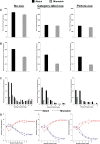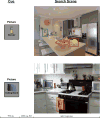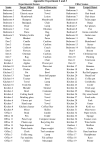Contrasting gist-based and template-based guidance during real-world visual search
- PMID: 28795834
- PMCID: PMC5809241
- DOI: 10.1037/xhp0000468
Contrasting gist-based and template-based guidance during real-world visual search
Abstract
Visual search through real-world scenes is guided both by a representation of target features and by knowledge of the sematic properties of the scene (derived from scene gist recognition). In 3 experiments, we compared the relative roles of these 2 sources of guidance. Participants searched for a target object in the presence of a critical distractor object. The color of the critical distractor either matched or mismatched (a) the color of an item maintained in visual working memory for a secondary task (Experiment 1), or (b) the color of the target, cued by a picture before search commenced (Experiments 2 and 3). Capture of gaze by a matching distractor served as an index of template guidance. There were 4 main findings: (a) The distractor match effect was observed from the first saccade on the scene, (b) it was independent of the availability of scene-level gist-based guidance, (c) it was independent of whether the distractor appeared in a plausible location for the target, and (d) it was preserved even when gist-based guidance was available before scene onset. Moreover, gist-based, semantic guidance of gaze to target-plausible regions of the scene was delayed relative to template-based guidance. These results suggest that feature-based template guidance is not limited to plausible scene regions after an initial, scene-level analysis. (PsycINFO Database Record
(c) 2018 APA, all rights reserved).
Figures











References
-
- Brockmole JR, Henderson JM. Using real-world scenes as contextual cues for search. Visual Cognition. 2006b;13(1):99–108. doi: 10.1080/13506280500165188. - DOI
MeSH terms
Grants and funding
LinkOut - more resources
Full Text Sources
Other Literature Sources

